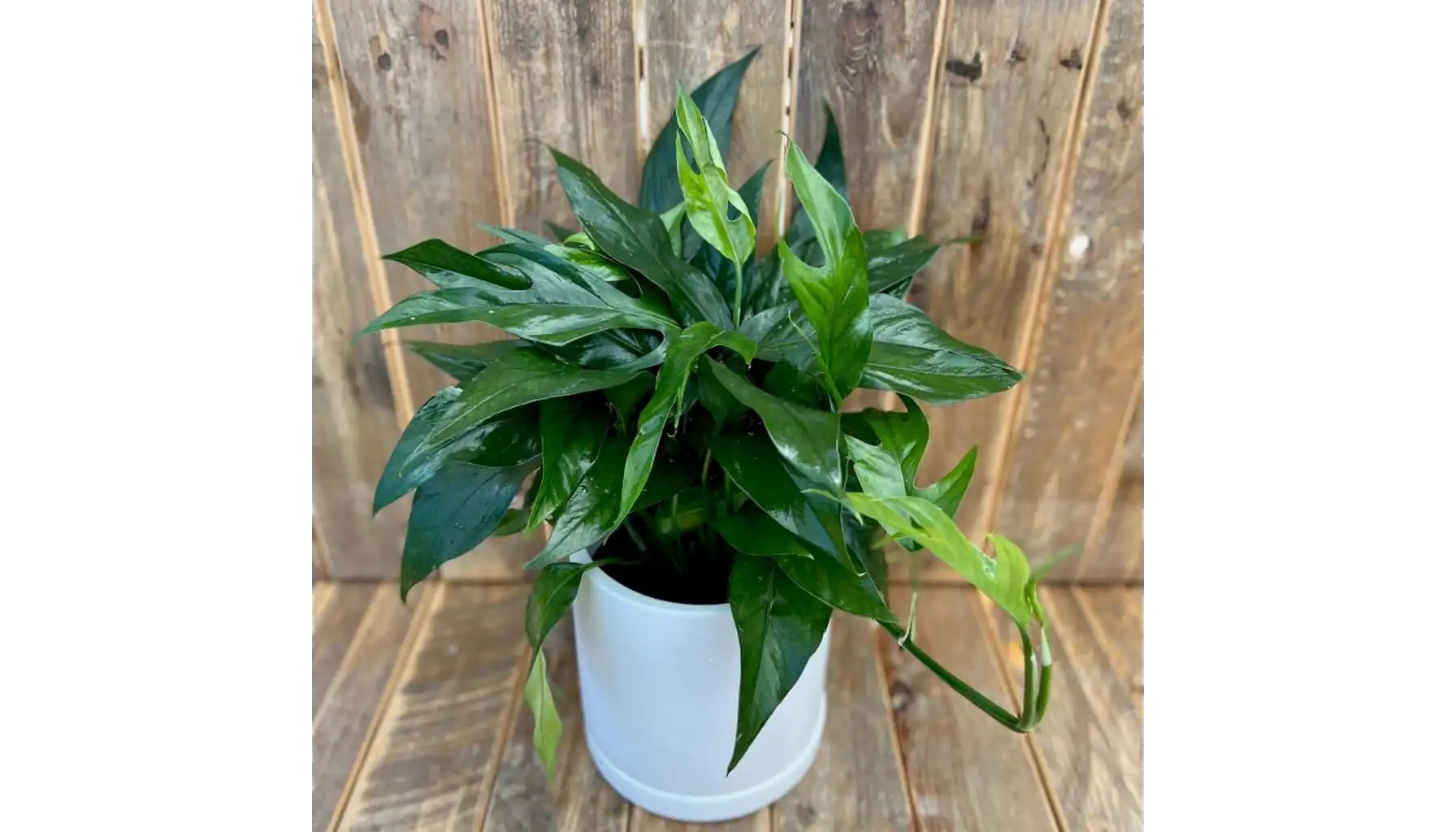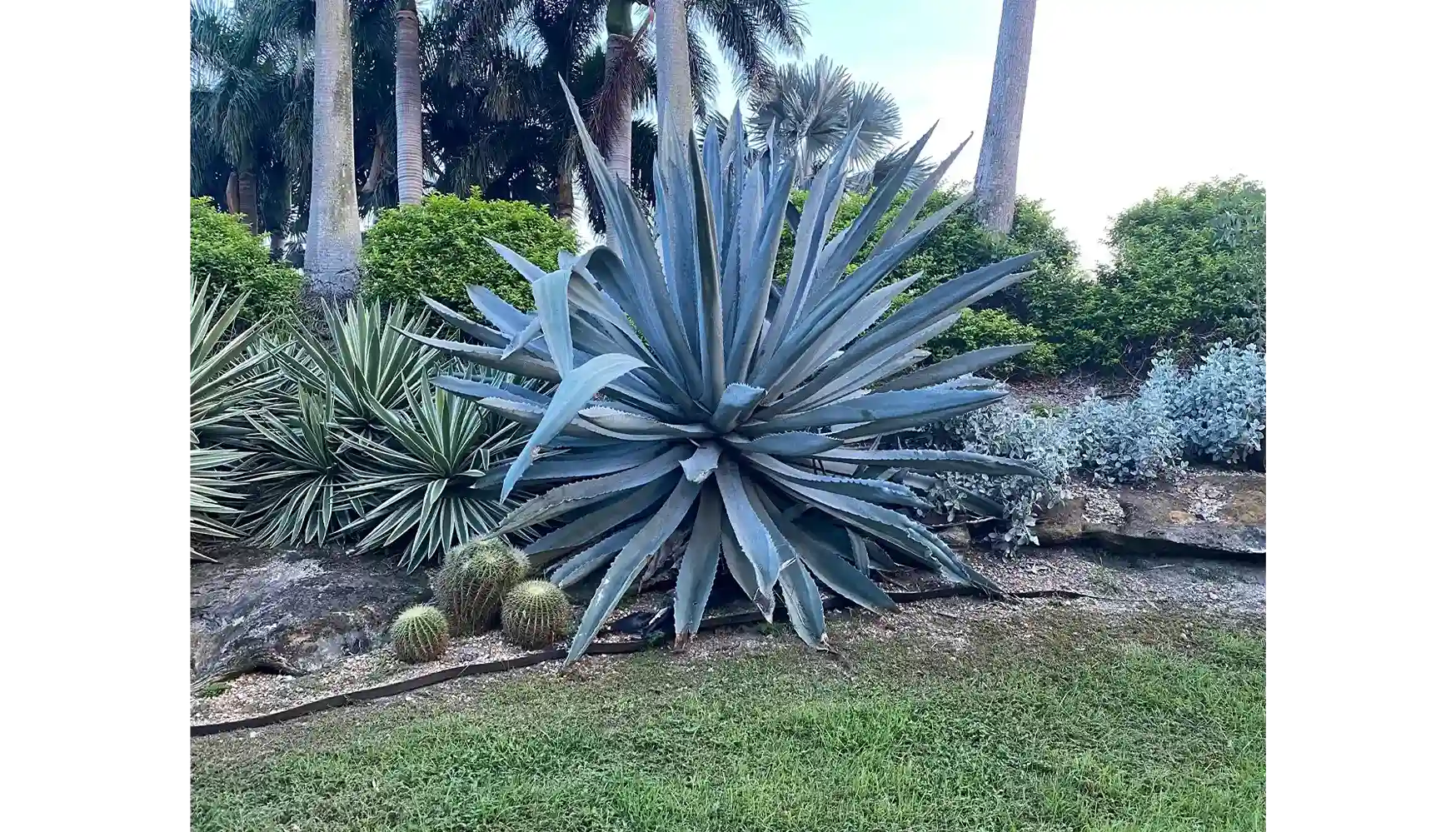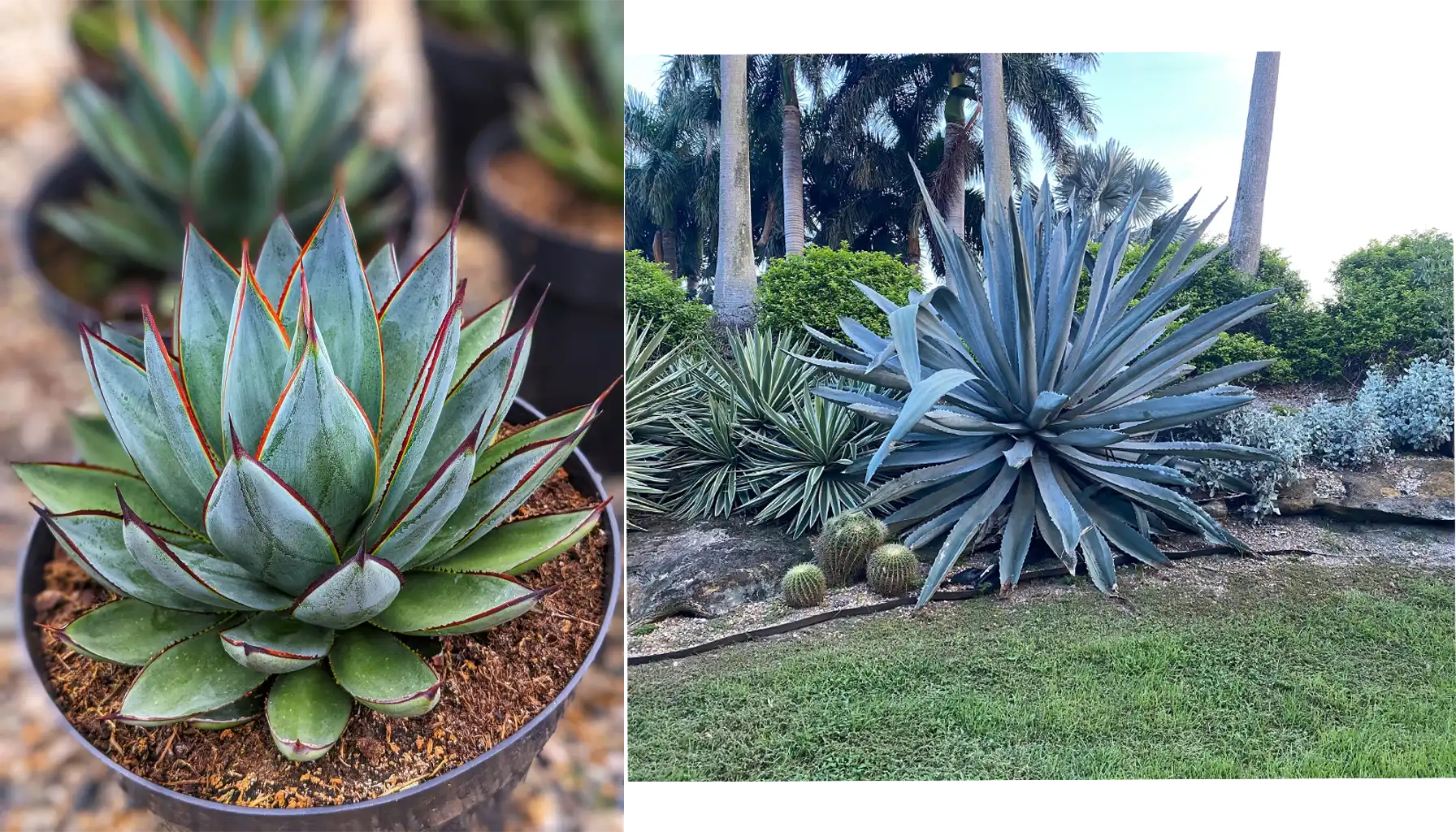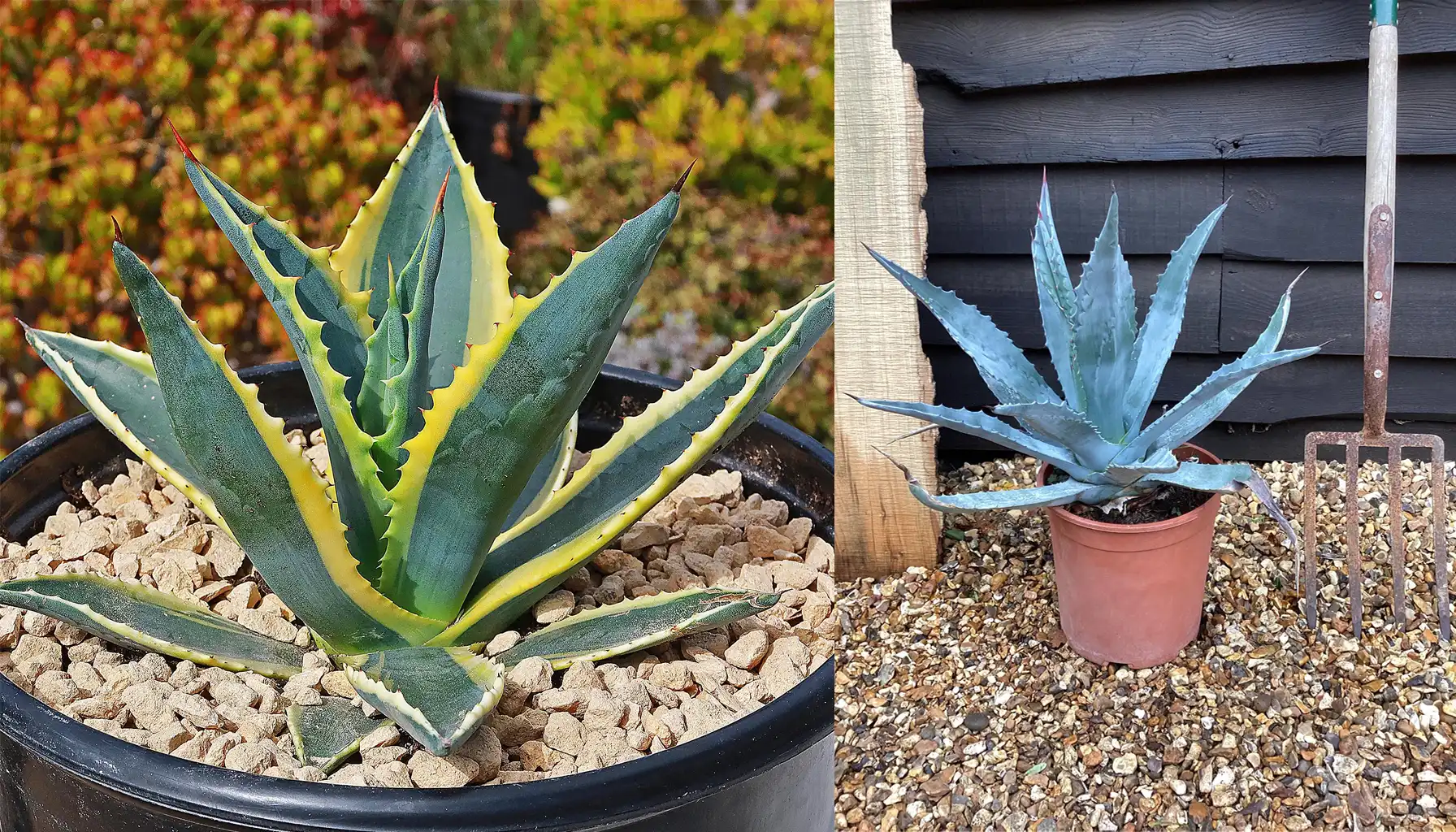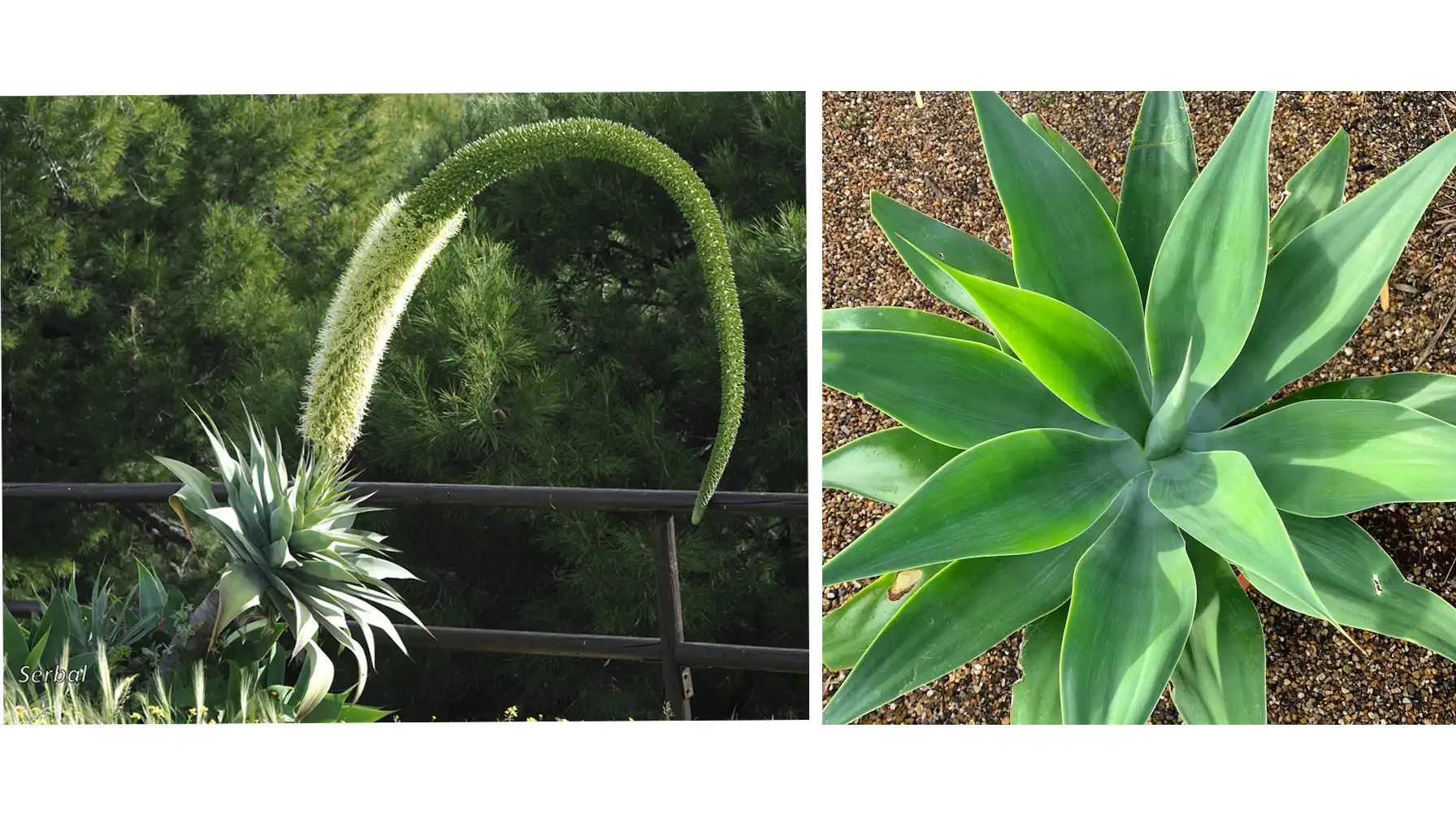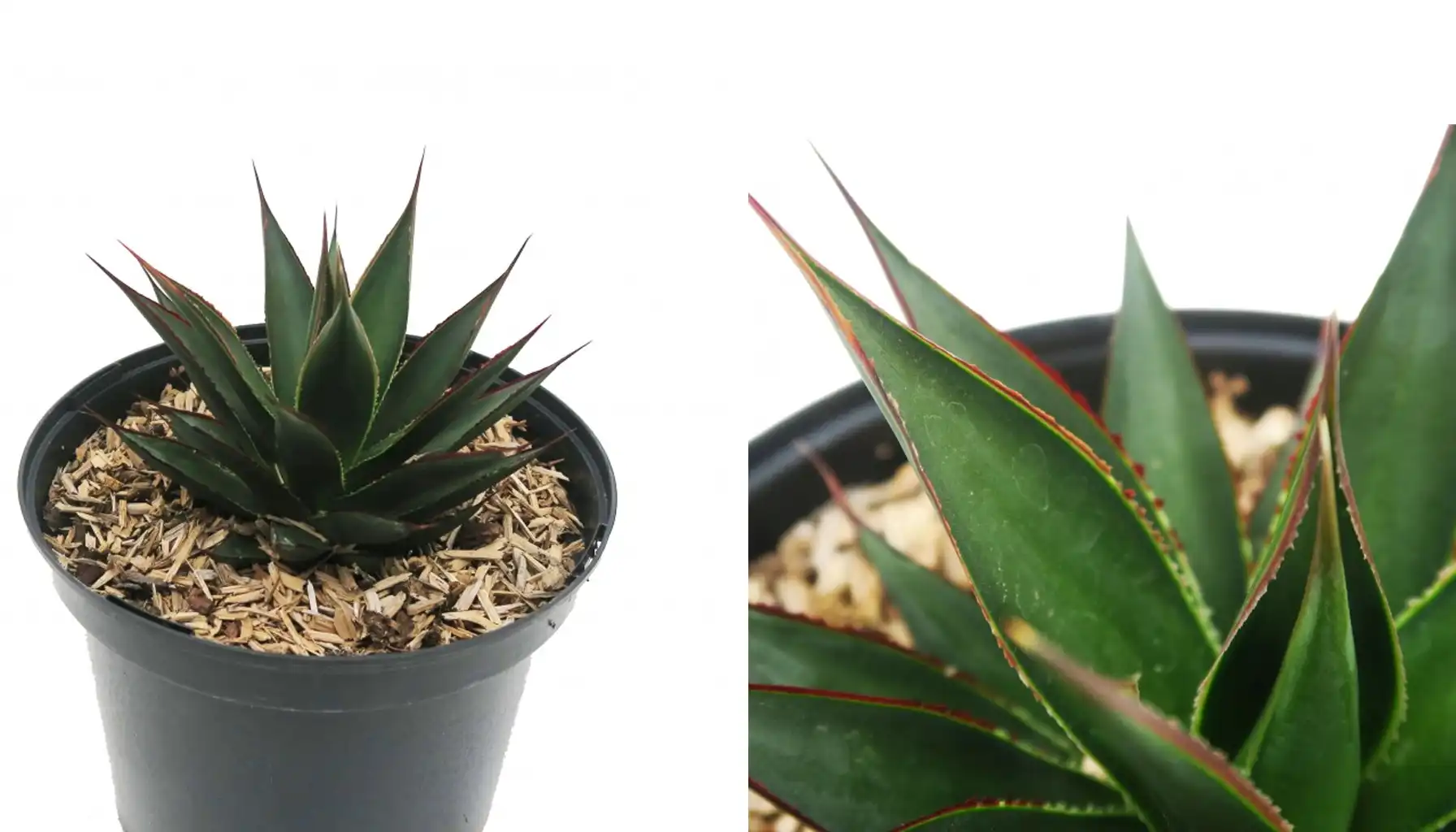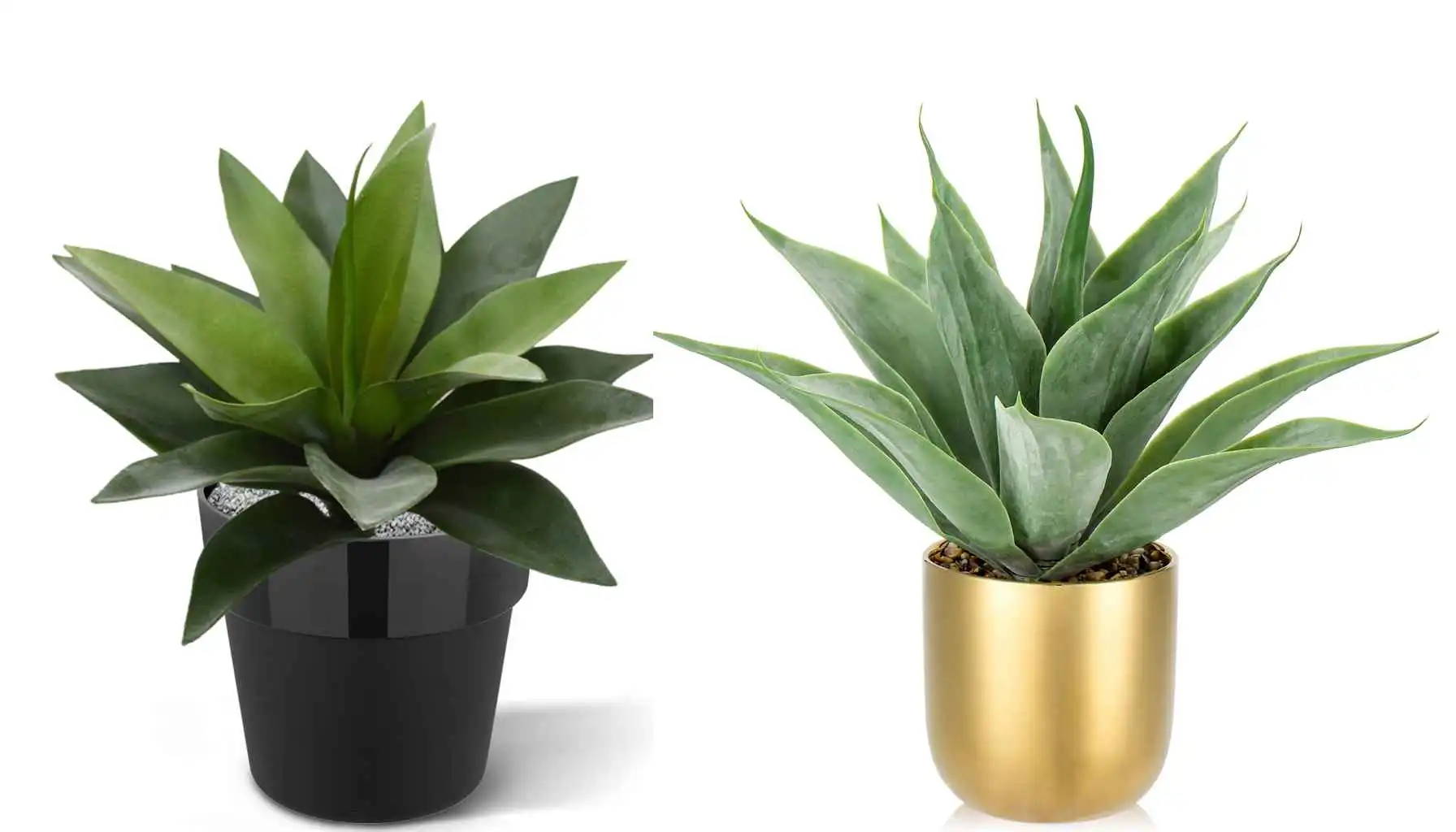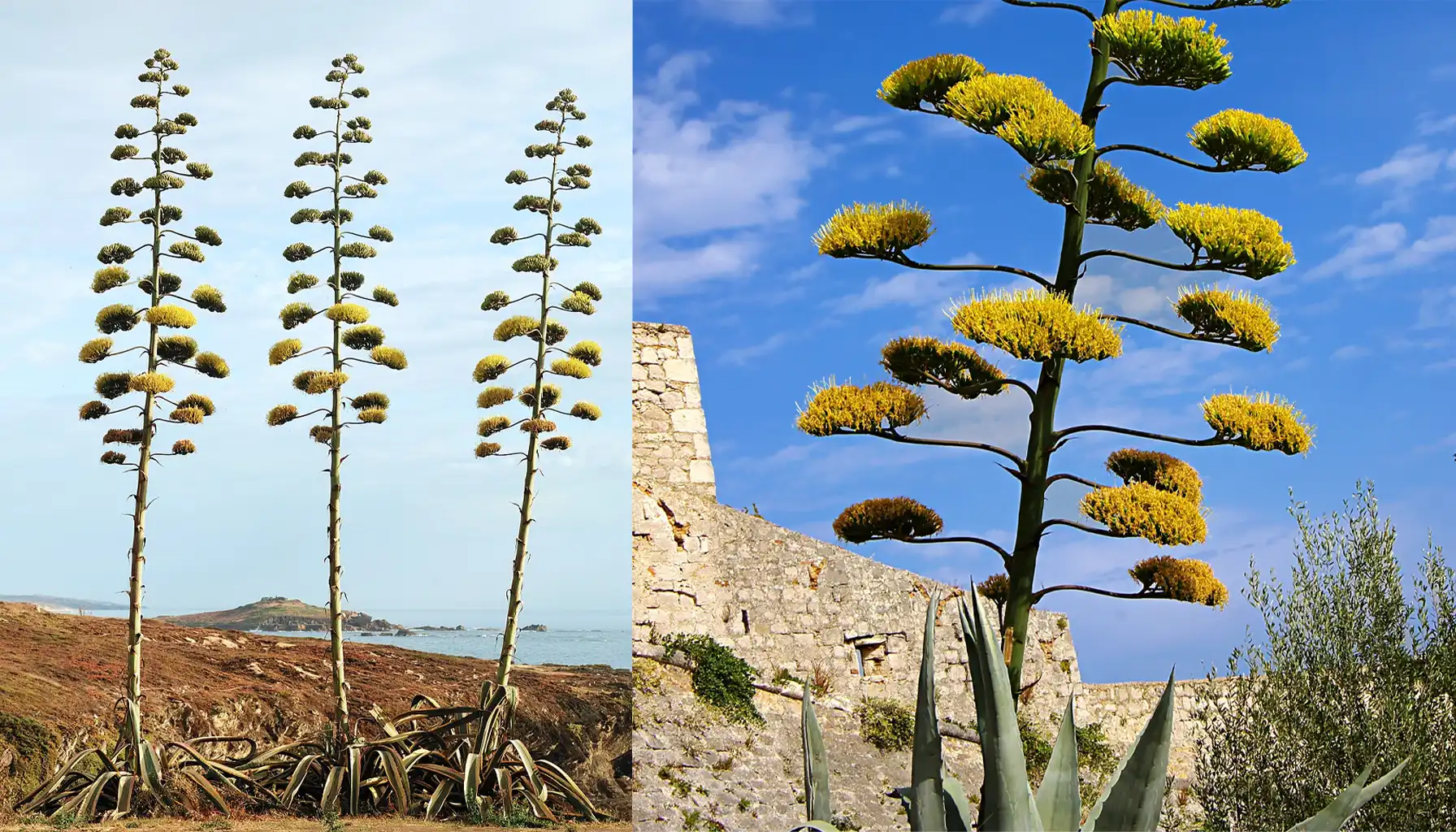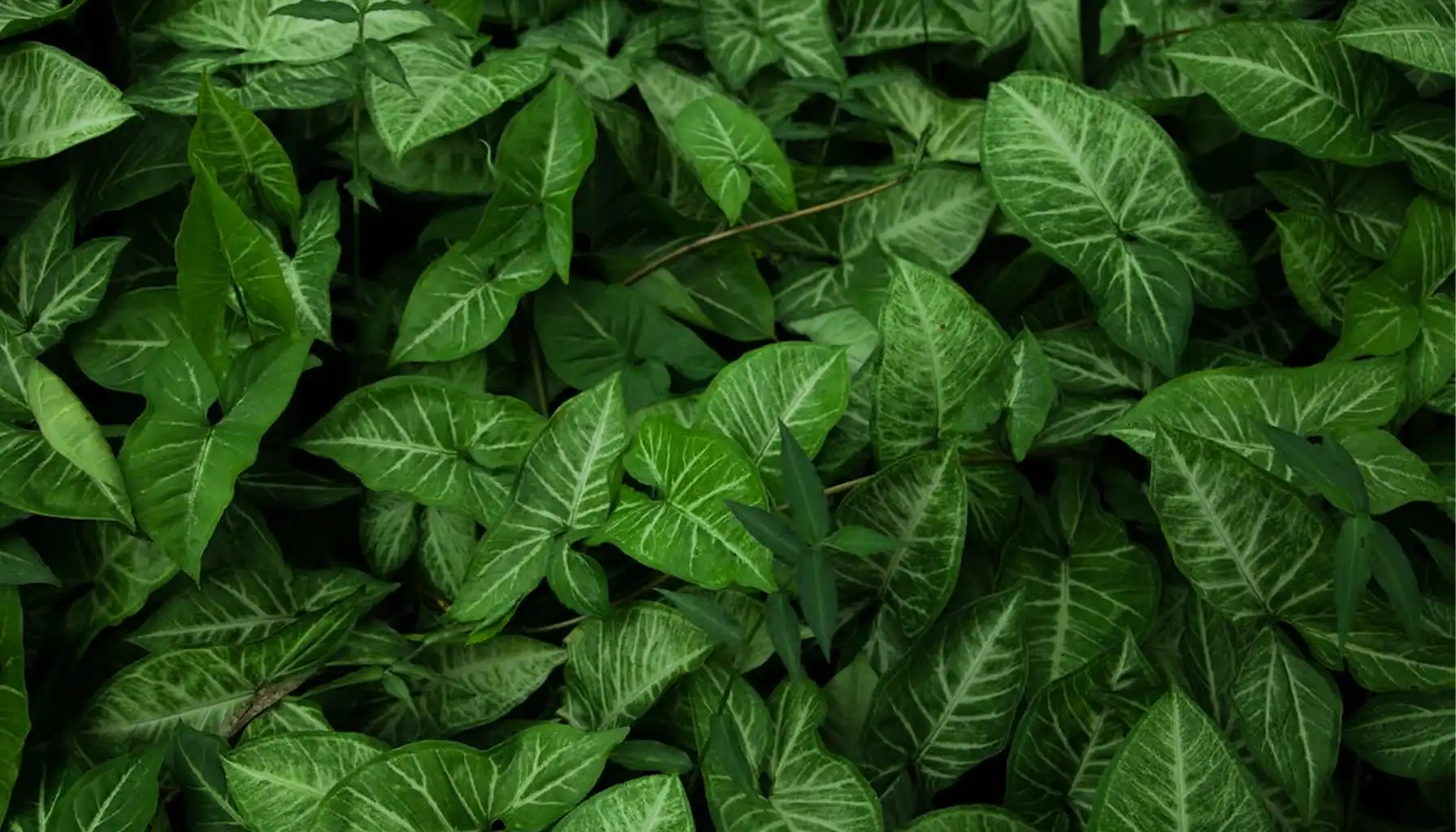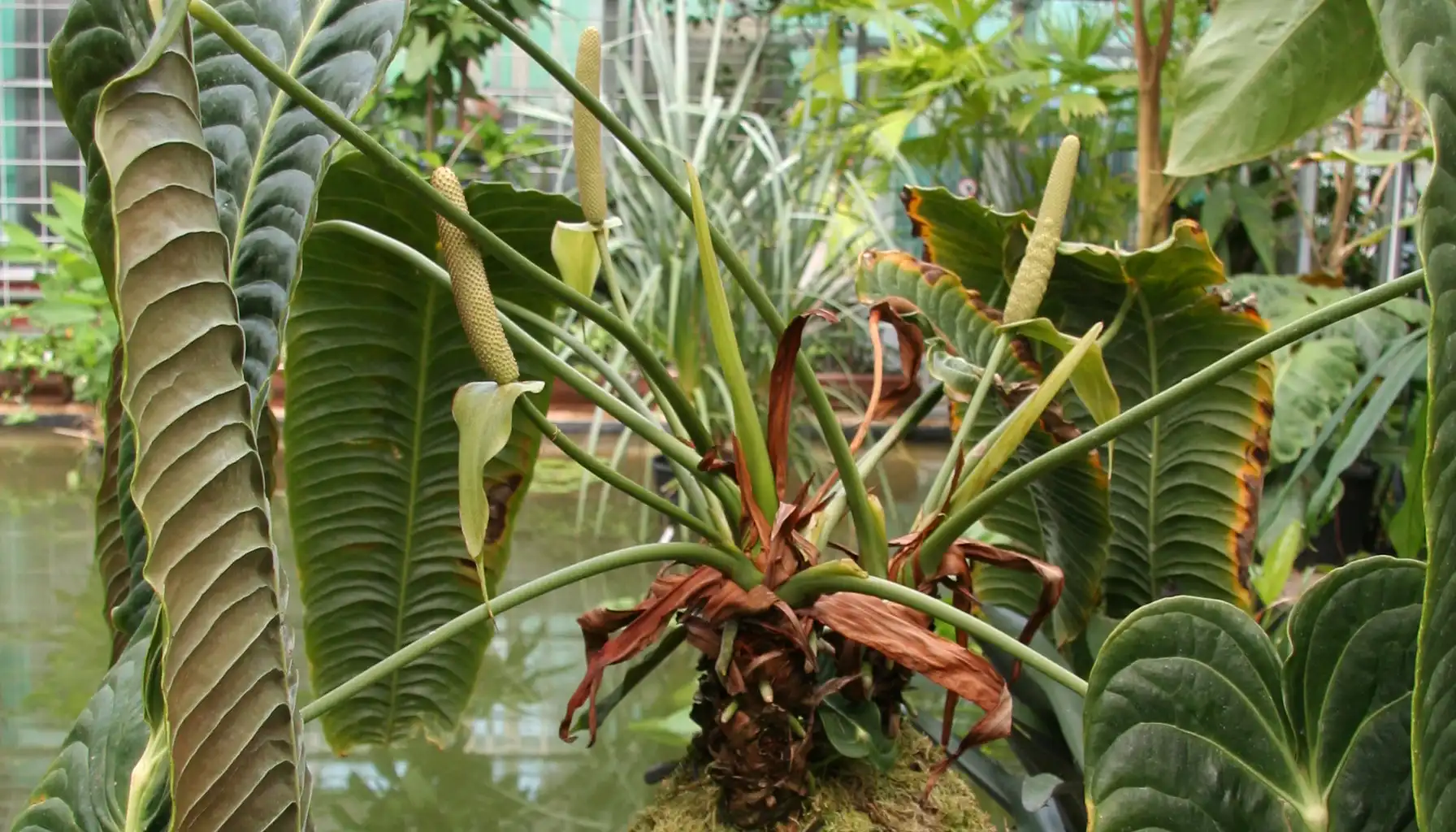Agave is truly a legendary plant. Historically, it was used as currency, decoration, medicine, fuel, nourishment… And of course, as a house plant.
This article will give you a detailed overview of the Agave plant and many of its varieties. A caring guide is included.
What do you do if you find a plant you don’t recognize? Use a Plant scanner!
About the Agave Plants
The agave plant is a popular succulent native mainly to hot, arid regions of Mexico. Today, it’s cultivated in many parts of the world with similar climates.
Agave is kept for beauty and use. Gardeners adore Agave’s thick leaves, often tipped with sharp spines. Practitioners grow this flora to produce sweeteners and spirits like tequila and mezcal.
Overview of the Agave family plants |
Feature | Details |
Origin | Mexico and the southwestern United States |
Type | Perennial succulent |
Size | Depends on species: from small (1–2 ft / 30–60 cm wide) to very large (over 10 ft / 3 m across) |
Life span | Long-lived (often 8–30 years before flowering) |
Leaf Colors | Typically blue-green, gray-green, or silvery |
Flowers | Yellow, greenish, or creamy white. Appear extremely rare |
Propagation | Mainly by offsets (pups). Produces seeds once in a lifetime |
Toxicity | Sap can cause skin irritation or burns. Certain parts are safe to eat after cooking |
Special Features | Fiber and nectar source |
As a side note, keep in mind that even though Aloe Vera looks uncannily similar to Agave, Aloe is not a plant in the Agave family. It’s a common misconception.
Agave Plant Types and Varieties
There are over 200 recognized species of Agave, each with its appearance, size, and uses. Some are ornamental, for landscaping and making a fancy Agave plant photo. Others are for Agave plant tequila production.
Blue Agave Plant
This variety has two main names, “Blue” and “Tequila” Agave, and both names are deserved. It has silver-blue, tall, upright leaves, and is used primarily as a plant that makes tequila. The components of the Blue variety were proven to help mitigate Crohn’s disease.
While you can find this variety even in the wild (Mexico), today it was almost completely domesticated.
Agave Century Plant
This variety features a large Agave plant. The leaves go up to 8 ft long. It’s a variegated Agave plant, meaning that the leaves have stripes. Though it’s not always the case: sometimes the foliage is green with yellow stripes, and sometimes it is plain.
As for the uses, this variety is common in landscaping due to its dramatic look, and it’s also one of the main ingredients for an alcoholic beverage named pulque.
Another name for this variety is Agave Americana plant.
Agave Attenuata Plant
This variety is unique because it has no spines on its soft green leaves. This lack of spikes makes these plants smaller and safer for gardens.
Another nickname for this variety is the Foxtail Agave plant. The nickname comes from a unique flower stalk that grows out in the middle, resembling a fox’s tail.
Red Agave Plant
Technically, there are no naturally red Agaves. Some Agaves develop reddish or bronze tints on their leaves when stressed by intense sunlight, cold, or drought.
The reddest known variety is the Agave desmetiana or “Red Edge”. The leaf margins are tinged with red, giving them a “red” appearance.
Another misunderstanding comes from the False Red Agave plant. It’s a species of succulents with vivid red coloration, but they are not from the Agave plant family.
Faux Agave Plant
Not a true variety, but a popular choice for house owners. The artificial version is fixed into a foam base, lighter, and glossier. It will never wilt or need care from you.
As a downside, the faux cannot give you the non-ornamental benefits of Agave (we will talk about benefits later).
Agave Plant Care
While this flora is not a cactus, there are many similarities between the two, and not just in appearance. Both are generally low-maintenance and can take harsh treatment.
Light Requirements
Agave can take full sun outdoors (6+ hours). Indoors, you can place it near a bright south-facing window.
If for some reason, your succulent ends up scorched, it’s better to move it closer to the shade.
Water Requirements
You don't need to water this flora frequently. The soil should become dry between waterings. In summer, you should water the plant every 1–2 weeks. In winter, once a month or less. Some owners don’t water this flower in winter at altogether.
Overwatering causes root rot, the mortal enemy of every heat-resistant plant like Cacti, African Spear, and Agave.
Soil Requirements
Succulents prefer well-draining sandy soil or gritty cactus/succulent mix. Such mixes help prevent overwatering.
Avoid clay or wet, soggy soil. This type of soil can cause root rot.
Fertilizer Requirements
Fertilizing is not mandatory, but if you consider it important, use light feeding in spring and summer with diluted cactus fertilizer. After feeding, your plant will produce more offshoots.
Temperature and Humidity Requirements
Remember that this flora is considered a desert plant. They can survive hot temperatures, but are weak to frost. Most don’t survive temperatures below 20–25°F (-6 to -4°C).
Avoid humid conditions. Humidity causes root rot.
About Agave Plant Bloom
What is the most beautiful part of this flora? Many would say, flowers. An Agave plant image with a bloom is a rare sight because they grow flowers once in a lifetime.
To reiterate, Agaves are monocarpic, i.e, Agave plants flower blooms once in their lifetime, after many years (anywhere from 8 to 30+ years depending on species).
When the flower grows, it’s usually supported by a stalk (like the one you saw in the Fox Tail variety), growing from 10 to 30 feet (3 to 9 meters) high. The flowers are nectar-rich and attract bats, hummingbirds, moths, bees, and other insects.
Agave plant death bloom happens about 3 to 4 months after it first grows the flower. This flower produces seeds for the next generation, and after it wilts, the Agave dies with it. It’s sad to see your green buddy pass, but if it bloomed, it means it lived a rich and long life, so you can only be proud of yourself as a gardener.
Propagation Tips
This flora produces seed once in its lifetime (as we’ve learnt just now), so it’s inconvenient for most gardeners. Most often, they propagate these shrubs with “pups”, small offshoots that grow naturally around the main shrub.
Wait until pups are at least one-third the size of the parent. The bigger they are, the more chances there are that they will survive in their new spot independently.
Use a clean, sharp knife or spade to detach the pups from the parent shrub. Try to cut the part when they are attached to each other, not too high.
After you detach the pup, you need to give it a day or two to become callous. After a day or two, put the pup in a well-draining mix. The part with a cut will become roots in a few weeks.
Water the pup sparingly but more often than the parent shrub. Young species are less drought-tolerant and usually need more water to grow.
This is the fastest and most reliable method.
Benefits for Owners
When it comes to usage, Agave is the king of the hill. It’s beautiful, tasty, and doesn't require much time and energy from its owners.
Benefit Category | Details |
Drought Tolerance | Thrives in arid, low-water environments and helps save on water bills. |
Low Maintenance | Requires minimal care once established and resists most pests. Helps save time and money on care products. |
Ornamental Value | Gives striking, architectural form for landscaping and decor. |
Erosion Control | The roots grow deep to help stabilize soil in dry, sandy areas. |
Wildlife Support | Flowers provide nectar for bats, hummingbirds, and insects. |
Edible Products | Source of agave nectar (sweetener) and edible roasted hearts. |
Beverage Production | Used to make tequila, mezcal, and pulque. |
Fiber Production | Leaves yield strong fibers (sisal) for ropes, mats, and crafts. |
Longevity | Lives many years before flowering, adding long-term beauty. |
AI Plant Finder
Here’s an app that can help with identification Agave plant types and other flora. AI Plant Finder.
The main function of this app is Instant Plant Identification. You just capture a photo of any shrub, flower, or leaf, and the app will analyze it to provide accurate identification, including species name, family, and common names.
The identification is really accurate because the app has a Comprehensive Plant Database of over 300,000 flora species.
The app is free to download on iOS and Android.Related AI Plant Finder Posts
